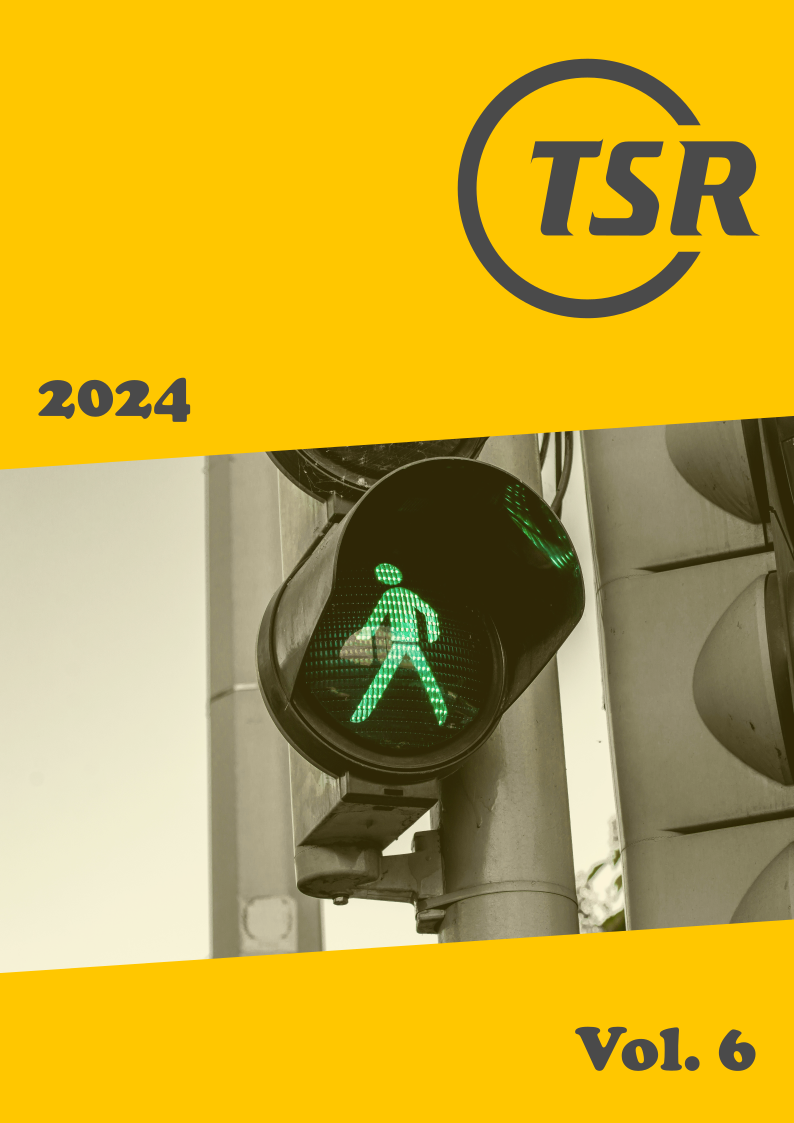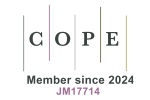Heart Zone as a measure to influence traffic safety culture: which factors influence culture change?
DOI:
https://doi.org/10.55329/nzwz4807Keywords:
Heart Zone, school road safety, traffic safety cultureAbstract
Measures to influence traffic safety culture in designated areas (e.g. schools) exist in several different countries across the world. The Norwegian traffic safety scheme Heart Zone is a measure that aims to influence the traffic culture within a specific geographical area. The study examines whether four Norwegian schools have managed to establish a Heart Zone traffic safety culture, factors facilitating and impeding the implementation of Heart Zone traffic safety culture and subsequent changes in parents' traffic safety behavior. The study is based on survey data from four Norwegian schools (n = 220) and qualitative interviews (n = 19). Although the level of implementation varies, results from the interviews and the survey suggest that the schools have established Heart Zone cultures, where large proportions of the parents drop the children off at the recommended drop-off zone, when driving, are attentive to students who come walking/cycling within the Heart Zone and walk or cycle when transporting children within the Heart Zone. The Heart Zone culture is related to changes in parents' traffic safety behaviors and reductions in dangerous traffic situations. The study identifies specific factors facilitating and impeding traffic culture change, related to enclosed geographical areas like the Heart Zone, developing an analytical model that researchers and future traffic culture measures like this can learn from.
Downloads
References
Aburumman, M., S. Newnam, B. Fildes (2019), 'Evaluating the effectiveness of workplace interventions in improving safety culture: A systematic review', Safety Science, 115, 376–392. DOI: https://doi.org/10.1016/j.ssci.2019.02.027
Amtrak, (2015), 'Safety and security: opportunities exist to improve the Safe-2-Safer program', Amtrak Office of Inspector General.
Antonsen, S. (2017), Safety Culture: Theory, Method and Improvement, (Boca Raton, Florida: CRC Press). DOI: https://doi.org/10.1201/9781315607498
Antonsen, S. (2009), 'The relationship between culture and safety on offshore supply vessels', Safety Science, 47(8), 1118–1128. DOI: https://doi.org/10.1016/j.ssci.2008.12.006
Bergen, (2020), 'Hjertesone - tryggere skolevei', Bergen Municipality.
Bjørnskau, T. (2014), 'The Zebra crossing game: A game theoretic model to explain counter-rule interaction between cars and cyclists', International Cycling Safety Conference, Gothenburg, Sweden, 18–19 November 2014.
Bye, R. J., A. L. Aalberg (2020), 'Why do they violate the procedures? An exploratory study within the maritime transportation industry', Safety Science, 123, 104538. DOI: https://doi.org/10.1016/j.ssci.2019.104538
Cialdini, R. B., R. R. Reno, C. A. A. Kallgren (1990), 'Focus theory of normative conduct: Recycling the concept of norms to reduce littering in public places', Journal of Personality and Social Psychology, 58, 1015–1026. DOI: https://doi.org/10.1037//0022-3514.58.6.1015
Clarke, R. (2022), 'School streets: putting children and the planet first. A political economy analysis of the rise of school streets in Europe and around the world. FIA foundation', Child Health Initiative.
Cooper, A. R., A. S. Page, L. J. Foster, D. Qahwaji (2003), 'Commuting to school: are children who walk more physically active', American journal of preventive medicine, 25(4), 273–276. DOI: https://doi.org/10.1016/S0749-3797(03)00205-8
Davey, J., J. Freeman, D. Wishart (2006), 'A study predicting crashes among a sample of fleet drivers', Australasian Road Safety Research, Policing and Education Conference, Gold Coast, Australia, pp. 25-27.
Dellinger, A. M. (2002), 'Barriers to children walking and biking to school--United States', Centers for Disease Control and Prevention, 51(32), 701–704.
Edinburgh, (2016), 'School streets pilot project evaluation', The City of Edinburgh.
Edkins, G. D. (1998), 'The INDICATE safety program: Evaluation of a method to proactively improve airline safety performance', Safety Science, 30(3), 275–295. DOI: https://doi.org/10.1016/S0925-7535(98)00049-6
Edwards, J., J. Freeman, D. Soole, B. Watson (2014), 'A framework for conceptualising traffic safety culture', Transportation Research part F: Psychology and Behaviour, 26, 293–302. DOI: https://doi.org/10.1016/j.trf.2014.03.002
Ellis, I. O., M. Amundsen, K. N. Kjørstad (2019), Development in the travel behavior.
Elvik, R., A. Høye, T. Vaa, M. Sørensen (2009), The Handbook of Road Safety Measures, (Leeds, UK: Emerald Insight). DOI: https://doi.org/10.1108/9781848552517
Flin, R., K. Mearns, P. O. Connor, R. Bryden (2000), 'Measuring safety climate: identifying the common features', Safety Science, 34(1-3), 177–192. DOI: https://doi.org/10.1016/S0925-7535(00)00012-6
Fyhri, A., B. Elvebakk (2011), 'Childrens daily travels in Oslo, Akershus and Buskerud counties of Norway', Institute of Transport Economics.
Gregersen, N. P., B. Brehmer, B. Moren (1996), 'Road safety improvement in large companies. An experimental comparison of different measures', Accident Analysis & Prevention, 28(3), 297–306. DOI: https://doi.org/10.1016/0001-4575(95)00060-7
Hillman, M., J. Adams, J. Whitelegg (1990), One false move. … A study of children's independent mobility, (London: Policy Studies Institute).
Hjorthol, R., S. Nordbakke (2015), 'Childrens activities and daily travels in 2013/2014', Institute of transport economics.
Huang, Y., D. Zohar, M. M. Robertson, A. Garabet, J. Lee, L. A. Murphy (2013), 'Development and validation of safety climate scales for lone workers using truck drivers as exemplar', Transportation Research Part F: Traffic Psychology and Behaviour, 17, 5–19. DOI: https://doi.org/10.1016/j.trf.2012.08.011
Høye, A., R. Elvik, M. W. Sørensen, T.-O. Nævestad, T. Vaa, R. O. Phillis (2022), The Handbook of Road Safety Measures, Oslo.
Kines, P., J. Lappalainen, K. L. Mikkelsen, E. Olsen, A. Pousette, J. Tharaldsen, K. Tómasson, M. Törner (2011), 'Nordic Safety Climate Questionnaire (NOSACQ-50): A new tool for diagnosing occupational safety climate', International Journal of industrial Ergonomics, 41(6), 634–646. DOI: https://doi.org/10.1016/j.ergon.2011.08.004
Lappalainen, F. J., J. Kuronen, U. Tapaninen (2012), 'Evaluation of the ism Code in the Finnish shipping companies', Journal of Maritime Research, 9(1), 23–32.
London, (2023), 'School streets (School safety zones)', Merton Council.
Luria, G., A. Boehm, T. Mazor (2014), 'Conceptualizing and measuring community road-safety climate', Safety Science, 70, 288–294. DOI: https://doi.org/10.1016/j.ssci.2014.07.003
Mcdonald, N. C. (2007), 'Active transportation to school: Trends among U.S. schoolchildren', American Journal of Preventive Medicine, 32(6), 509–516. DOI: https://doi.org/10.1016/j.amepre.2007.02.022
Milch, V., T.-O. Nævestad (2022), 'Evaluering av Hjertesone: En prosessevaluering av hjertesoneprosjektet i Bergen kommune [Evaluation of Heart Zone: A process evaluation of the Heart Zone project in Bergen municipality]', Institute of Transport Economics, TØI rapport 1877/2022.
Nævestad, T.-O. (2010), 'Cultures, crises and campaigns: Examining the role of safety culture in the management of hazards in a high-risk industry', PhD thesis, Universitetet i Oslo, Oslo, Ph.D dissertation.
Nævestad, T.-O., T. Bjørnskau (2012), 'How Can the Safety Culture Perspective be Applied to Road Traffic?', Transport Review, 32(2), 139–154. DOI: https://doi.org/10.1080/01441647.2011.628131
Nævestad, T.-O., A. Laiou, R. O. Phillips, T. Bjørnskau, G. Yannis (2019), 'Safety culture among private and professional drivers in Norway and Greece: examining the influence of national road safety culture', Safety, 5(2), 20. DOI: https://doi.org/10.3390/safety5020020
Nævestad, T.-O., R. Phillips, S. I. Hesjevoll (2018), 'How can we improve safety culture in transport organizations? A review of interventions, effects and influencing factors', Transportation Research Part F: Psychology and Behaviour, 54, 28–46. DOI: https://doi.org/10.1016/j.trf.2018.01.002
Naveh, E., T. Katz-Navon (2015), 'A longitudinal study of an intervention to improve road safety climate: Climate as an organizational boundary spanner', Journal of Applied Psychology, 100(1), 216–226. DOI: https://doi.org/10.1037/a0037613
NCRS, (2021), 'Hjertesone – tryggere skolevei', Norwegian Council for Road Safety.
NCRS, (2024), 'Skoler som er i gang med hjertesone', Norwegian Council for Road Safety.
NESH, (2021), 'Forskningsetiske retningslinjer for samfunnsvitenskap og humaniora', NESH.
Newnam, S., J. Oxley (2016), 'A program in safety management for the occupational driver: conceptual development and implementation case study', Safety Science, 84, 238–244. DOI: https://doi.org/10.1016/j.ssci.2015.12.020
Noble, R., N. Noal, C. Watson, E. Jackson, J. Powell (2021), 'School streets. Intervention sites vs. control sites full report', School streets initiative.
Opedal, J., H. Skar, R. Dischler, O. Brauteset (2020), 'Barns aktiviteter og daglige reiser i 2020', Opinion AS.
Özkan, T., T. Lajunen, J. E. Chliaoutakis, D. Parker, H. Summala (2006), 'Cross-cultural differences in driving behaviours: A comparison of six countries', Transportation Research Part F: Psychology and Behaviour, 9(3), 227–242. DOI: https://doi.org/10.1016/j.trf.2006.01.002
Rothman, L., T. To, R. Buliung, C. Macarthur, A. Howard (2014), 'Influence of social and built environment features on children walking to school: An observational study', Preventive Medicine, 60, 10–15. DOI: https://doi.org/10.1016/j.ypmed.2013.12.005
Schein, E. H. (2004), Organizational Culture and Leadership (3. ed), (San Francisco: Jossey- Bass).
SD, (2021), 'National Transport Plan 2022–2033', The Norwegian Ministry of Transport.
Størkersen, K., T. Thorvaldsen, T. Kongsvik, S. Dekker (2020), 'How deregulation can become overregulation: An empirical study into the growth of internal bureaucracy when governments take a step back', Safety Science, 128, 104772. DOI: https://doi.org/10.1016/j.ssci.2020.104772
Thomas, A. (2022), 'Making School strets healthier: Learning from temporart and emergency closures', University of Westnister.
Toronto, (2023), 'Community safety zones - Vision Zero', City Of Toronto.
Ward, N. J., J. Linkenbach, S. N. Keller, J. Otto (2010), 'White Paper on Traffic Safety Culture', College of Engineering Montana State University.
Westman, J., M. Friman, L. E. Olsson (2017), 'What drives them to drive?-parents' reasons for choosing the car to take their children to school', Frontiers in psychology, 8. DOI: https://doi.org/10.3389/fpsyg.2017.01970
Wills, A. R., H. C. Biggs, B. Watson (2005), 'Analysis of a safety climate measure for occupational vehicle drivers and implications for safer workplaces', Australian Journal of Rehabilitation Counselling, 11(1), 8–21. DOI: https://doi.org/10.1017/S1323892200000132
Wilson, E. J., R. Wilson, K. J. Krizek (2007), 'The implications of school choice on travel behavior and environmental emissions', Transportation Research Part D: Transport and Environment, 12(7), 506–518. DOI: https://doi.org/10.1016/j.trd.2007.07.007
Zuschlag, M., J. M. Ranney, M. Coplen (2016), 'Evaluation of a safety culture intervention for Union Pacific shows improved safety and safety culture', Safety Science, 83, 59–73. DOI: https://doi.org/10.1016/j.ssci.2015.10.001
Published
How to Cite
Issue
Section
License
Copyright (c) 2024 Vibeke Milch, Tor-Olav Nævestad

This work is licensed under a Creative Commons Attribution 4.0 International License.









